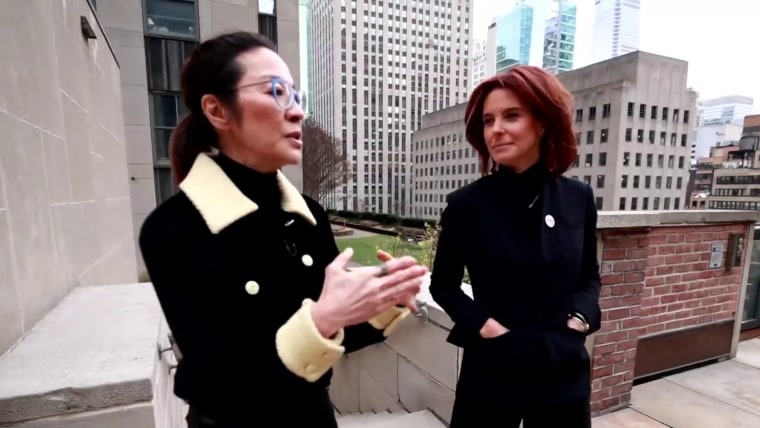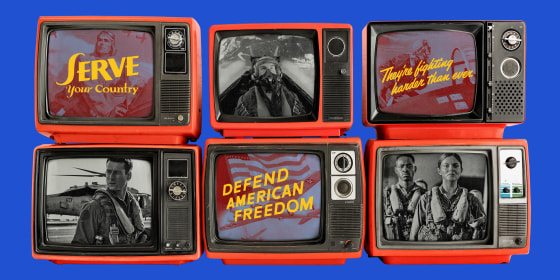“Top Gun: Maverick,” an action flick, a summer blockbuster and a sequel, is not the kind of movie that tends to win accolades at award shows. Yet it’s received six Oscar nominations, including, remarkably, best picture. “Top Gun” has secured an air of gravitas, and could be poised to become canonized as a highly decorated film.
The unusual cultural cachet of “Top Gun” is tied to how it fulfills a certain yearning felt across the world of film lovers. In a cinematic climate in which superhero and CGI-animated films have saturated the silver screen, it was a breath of fresh air to see dazzling live-action aerial combat scenes involving real actors (trained to withstand G forces by real pilots) and (mostly) real planes. Although movie theaters are dying and streaming is thriving, this old school thrill attracted huge crowds of all ages to the theaters to make “Top Gun” the second-highest grossing film in 2022 behind James Cameron’s “Avatar: the Way of Water.”
It’s a poisonous kind of nostalgia, one that smuggles love of endless war into a celebration of live action.
But “Top Gun” is as insidious as it is entertaining. It does not merely revive a forgotten human-centered spectacle; it also beckons for a return to accepting the American war machine as a beacon of virtue and excitement. It’s a poisonous kind of nostalgia, one that smuggles love of endless war into a celebration of live action.
"Top Gun" is literal propaganda: In exchange for access to military aircraft, the producers of the movie agreed to allow the Defense Department to include its own “key talking points” in the script. Perhaps equally important, the script had to be written in a manner that flatters the military in order to secure the buy-in of the Pentagon. (Even then, defense officials requested "revisions" to the characters and their actions.) This collaboration in jingoism is evident throughout the script. The minor rebellions of Pete “Maverick” Mitchell, played by Cruise, against his higher-ups in the military are minor diversions from his obedience to the logic of empire. It should be no surprise that just like with the first “Top Gun” movie, released in 1986, the military viewed the sequel as a promising recruitment tool, and ran U.S. Air Force ads before showings of the movie with imperialistic lines like “the entire sky belongs to us.” While the first movie helped rehab the military's poor reputation in the wake of the Vietnam War, this one diverts from the failed war on terror, and comes as defense officials eye the rise of China.
I don’t object to anyone’s enjoyment of the film, but I hope it tanks at the Oscars. It’s possible to make thrilling action without so brazenly priming the public for warfare.
The opening sequence of “Top Gun” is breathtaking, not only for the way it sets the pace for the movie but also because of its absurd salute to defending the military industrial complex. Maverick discovers that a program to develop a next-generation aircraft that he’s helping test is about to be shut down by an admiral who’s a fan of drone warfare. In a bid to keep the program alive and help keep the developers employed, Maverick hops into the plane and defiantly flies it at the astonishing speed of Mach 10, even though it’s not safe to push the plane to such a speed. Maverick almost incinerates himself in the process as the jet catches fire and explodes, but he narrowly escapes — and successfully convinces the military to keep the program alive.

On one level, Maverick’s insistence on the value of human labor is relatable in the age of anxiety about ChatGPT stealing jobs. But Maverick is also operating on behalf of more nefarious forces. We are never informed what need there is for this aircraft, or why it needs to fly at this blistering speed (no manned aircraft has gotten close to this speed). All we know is that the jet looks sleek and powerful. Yet there is a strange desperation to risk life and limb for it, as if a weapons program is a soldier that’s never meant to be left behind. Maverick embodies the American bipartisan spirit of forever increasing the U.S. colossal defense budget — his first great deed in the movie is to nearly self-immolate in service of the military industrial complex.
In the main mission of the film, Maverick is asked to oversee the bombardment of a “secret uranium enrichment site under rogue state control.” Just like in the first “Top Gun,” the enemy is never identified as a specific country or organization, but the description of the mission hints at one real-life scenario: Iran’s nuclear program. Maverick is disturbed by the fact that his commander wants him to train a group to go on what’s likely to be a suicide mission, and takes unilateral action to make the mission at least somewhat more survivable. But crucially, the rebellious Maverick never questions the value of the mission itself, which could easily be an opening salvo of a major war.
The subtext of bombing a nuclear enrichment site, which could very well be in Iran, is a striking choice that betrays a bellicose worldview. It revives the neoconservative conception of preventive warfare — the idea of using force to eliminate threats to American power before they can emerge. (The enemy country presumably lacks nuclear bombs, but the U.S. is willing to intervene militarily in order to ensure it can’t obtain them.) It's a foreign policy paradigm that gives the U.S. license to ignore small things like "national sovereignty." It’s also a particularly loaded scenario to portray at a time when, in the real world, the Iran nuclear deal is hanging by a thread and hawks are eager to scrap diplomatic efforts and green light bombardment of the country.
In other words, it’s a fantasy of war that could actually play out in real life. And it truly is a fantasy: War is portrayed purely as a source of glory and camaraderie for Maverick and his colleagues, who are all attractive people and manage to pull off their daring mission with zero casualties. Their training involves speed, sport and glamour; Cruise spends his spare time on a majestic sail boat for some reason. Much of the movie has the feel of a racing or sports movie, gamifying the use of lethal technology and geopolitical intervention as a contest of precise oneupmanship.
As every branch of the military faces recruitment problems, a beloved movie that makes war look thrilling and bloodless could be a solution.
“Don’t think, just do,” Maverick constantly counsels his protégé Bradley “Rooster” Bradshaw, underscoring the movie’s plea for the audience to be mindless about combat. Maverick means to refer to the value of a pilot’s instinct, but he’s also asking his students to suspend their ability to think critically about the purpose of the institution they’re in. (The mantra does lead Rooster to defy orders based on his moral instincts, but again, it does not jeopardize the mission.) More broadly, “Don’t think, just do” is also a fitting slogan for the U.S. foreign policy establishment — consistently eager to intervene in other countries without thinking carefully about whether it’s right or if it will be effective.
The first “Top Gun” movie was also produced in close consultation with the Pentagon, whose leaders correctly predicted that the movie would lead to a surge in recruitment numbers and improve the image of the military. While it's unclear so far what effect the new movie has had on recruitment, early indications are that even trailers for the new movie produced increased interest in enlisting in the military. As every branch of the military faces recruitment problems, a beloved movie that makes war look thrilling and bloodless could be a solution.
Back in 1990, four years after the first “Top Gun” came out, Playboy magazine grilled Cruise by challenging him on whether the original "Top Gun" movie was dangerous war propaganda. Playboy’s interviewer described the movie as “war by Nintendo game and a paean to blind patriotism.” Cruise defended the movie as a “an amusement park ride, a fun film with a PG-13 rating that was not supposed to be reality.” But he also seemed to acknowledge that there were still dangers to using a war movie as a form of mindless entertainment. He continued: “That’s why I didn’t go on and make Top Gun II and III and IV and V. That would have been irresponsible.”

